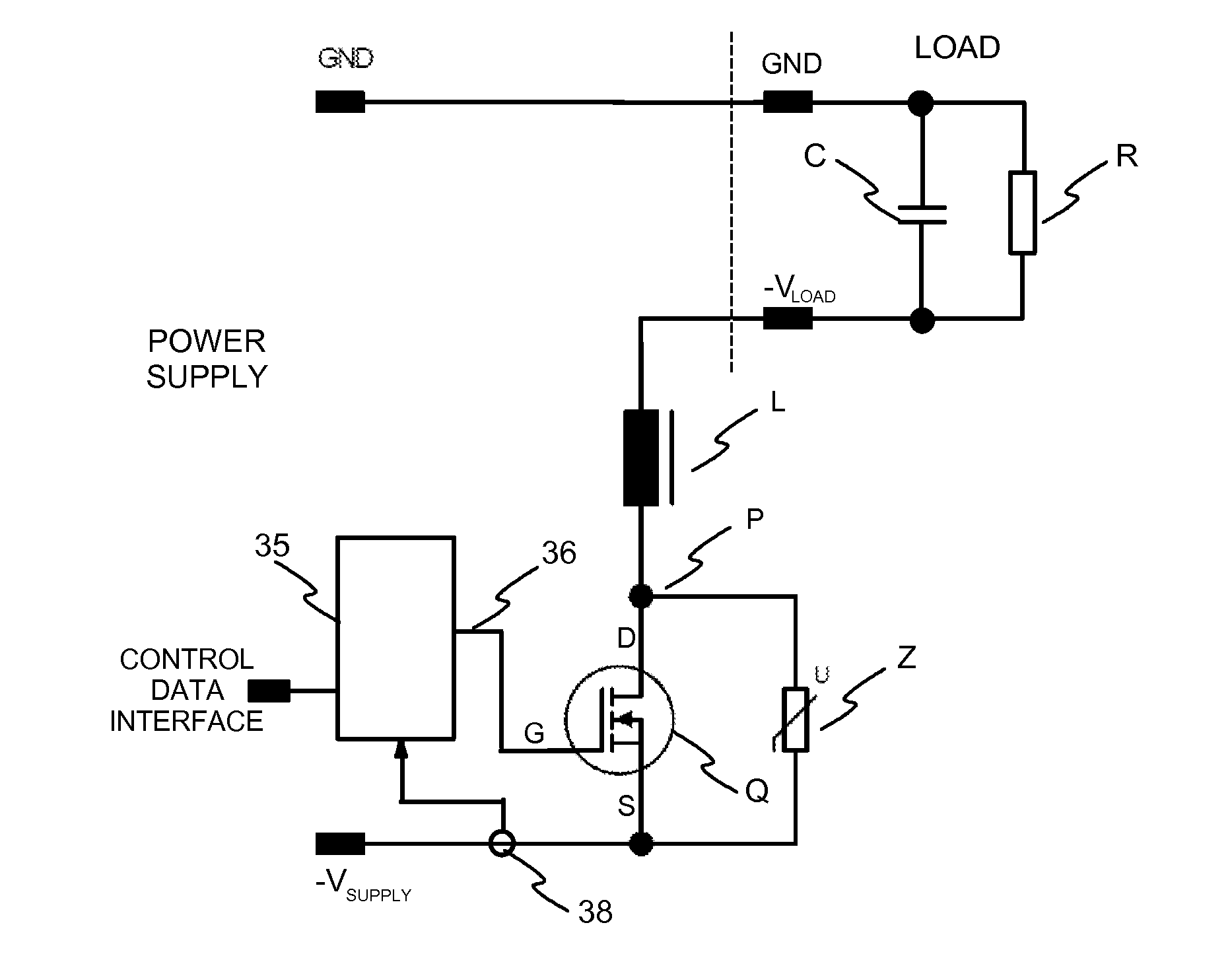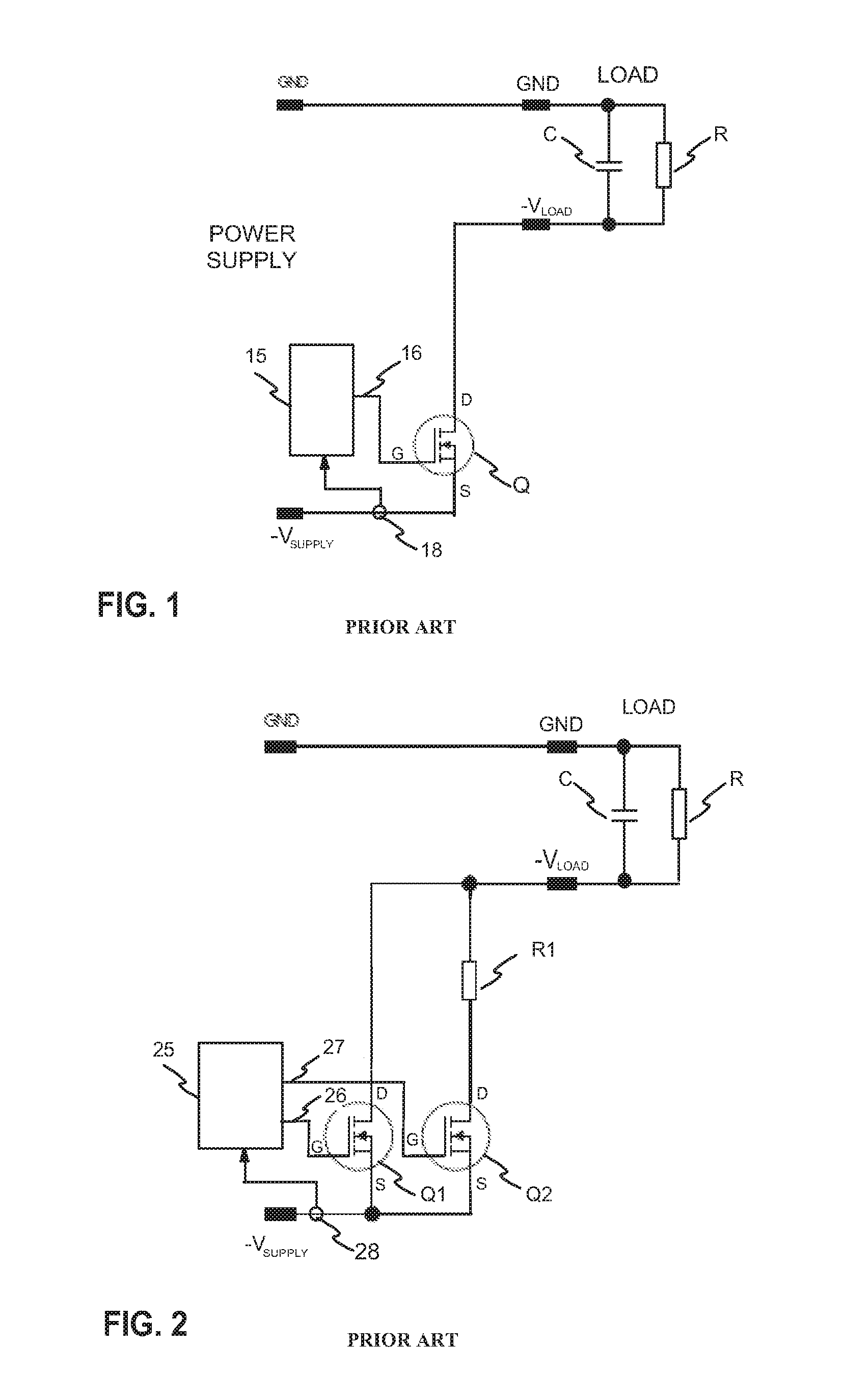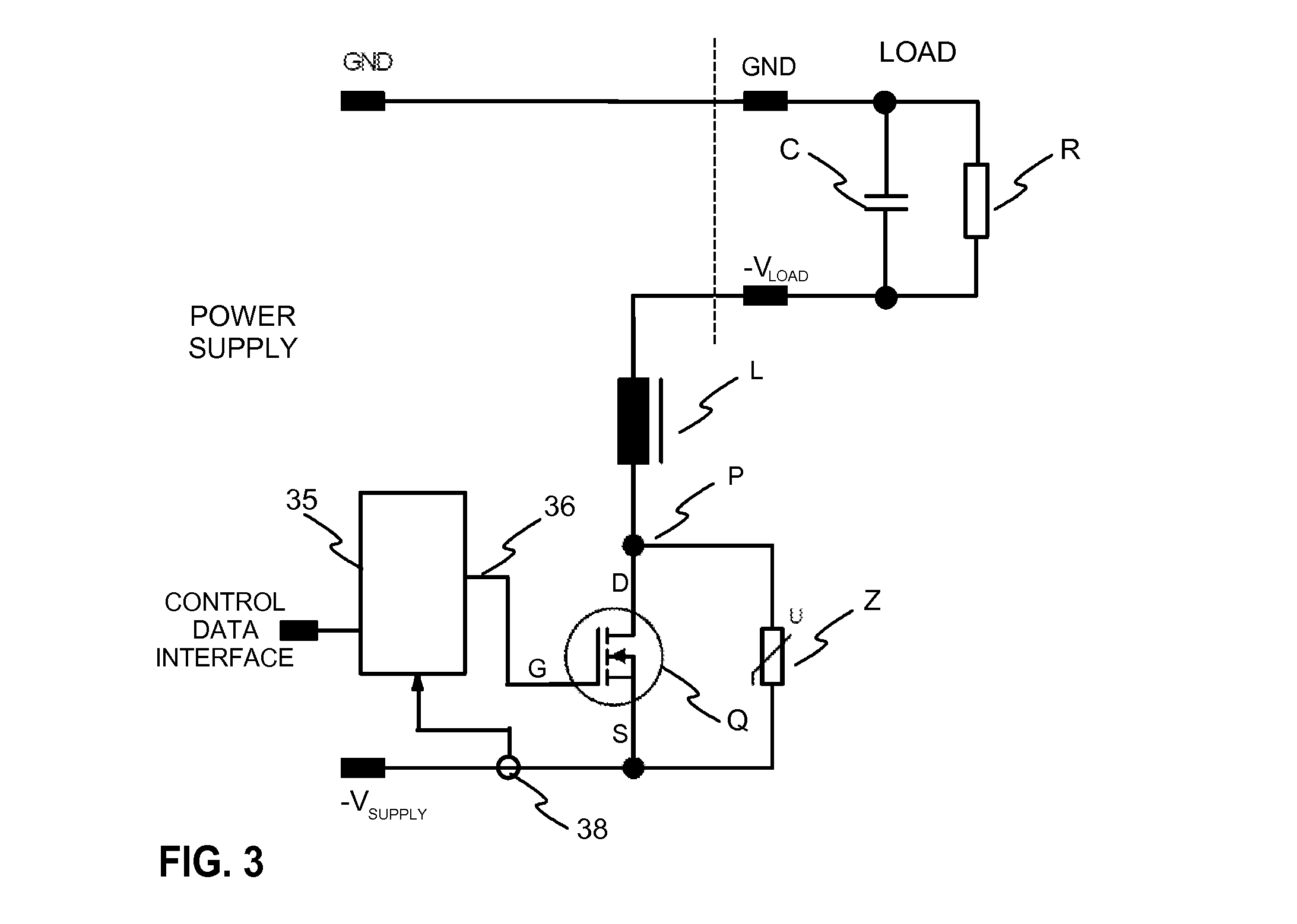Circuit, method and system for overload protection
a technology of overload protection and circuit, applied in transmission systems, power conversion systems, ac-dc network circuit arrangements, etc., can solve the problems of excessively high load current, power components of power supply damage, load not matching with power supply ratings, etc., to achieve moderate production costs and high reliability.
- Summary
- Abstract
- Description
- Claims
- Application Information
AI Technical Summary
Benefits of technology
Problems solved by technology
Method used
Image
Examples
Embodiment Construction
[0048]FIGS. 1 and 2 where described on the prior art part of the description.
[0049]FIG. 3 illustrates an exemplary overload protection circuit according to the invention. A power supply provides an output voltage between ground GND and negative voltage output −VSUPPLY terminals. The power supply provides power to a load which has terminals for ground GND and negative voltage input −VLOAD. R is used in the Figure to denote resistive load and C is used to denote capacitive load.
[0050]The overload protection circuit has a switching element Q, which may be a power semiconductor, such as MOSFET or an IGBT, for example. The switching transistor is controlled with control means 35, which has a control output 36 connected to the gate G of the switching transistor. The overload protection circuit has an inductor L connected in series with the switching element Q. In the circuit of FIG. 3 the source S of the switching element is connected to the negative terminal −VSUPPLY of the power supply,...
PUM
 Login to View More
Login to View More Abstract
Description
Claims
Application Information
 Login to View More
Login to View More - R&D
- Intellectual Property
- Life Sciences
- Materials
- Tech Scout
- Unparalleled Data Quality
- Higher Quality Content
- 60% Fewer Hallucinations
Browse by: Latest US Patents, China's latest patents, Technical Efficacy Thesaurus, Application Domain, Technology Topic, Popular Technical Reports.
© 2025 PatSnap. All rights reserved.Legal|Privacy policy|Modern Slavery Act Transparency Statement|Sitemap|About US| Contact US: help@patsnap.com



